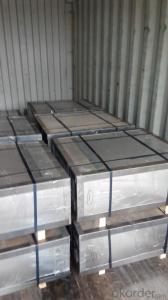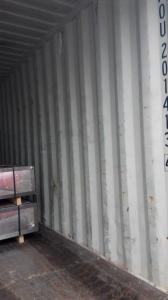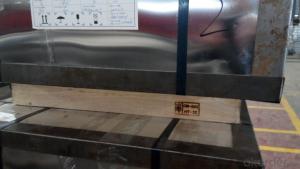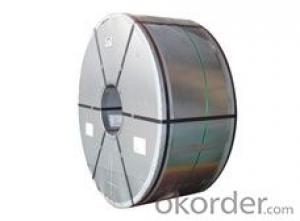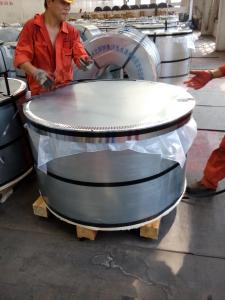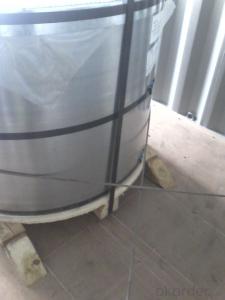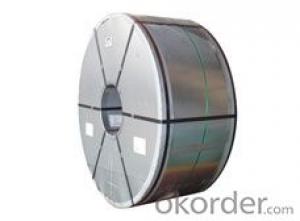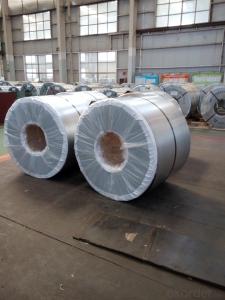Prime Good Quality ETP Tinplate
- Loading Port:
- China Main Port
- Payment Terms:
- TT OR LC
- Min Order Qty:
- -
- Supply Capability:
- -
OKorder Service Pledge
OKorder Financial Service
You Might Also Like
We have been producing tinplate material professionally and providing related service for decades years. Now we have been exporting our material to the world. Please kindly contact us to meet your needs for ETP materail.
Below is the specification we currently do:
1. Standard: GB/T 2520-2000, JIS G3303-2002 and DIN EN 10203-1991
2. Raw material: MR, SPCC
3.Thickness: 0.18 to 0.50mm
4. Width: 260 to 980mm
5. Coil diameter: ID 420mm or 508mm
6. Temper grade: T2, T3 and T4
7. Tin coating: ordinary 2.8 or 2.8g and 5.6g or 5.6g, can produce according to customer's requests
8. Applications: paint, chemical and other usage can make battery, electric cable and other industries
9. Package: anti-rust paper, corner protected. Sheets or coils according customer's request.
Standard for Temper:
code | Chinese Stardard | Japaness Standard | American Standard | European Standard | International Standard |
| GB/T 2520-2000 | JIS G3303-2002 | ASTM A623M-2002 | DIN EN 10203-1991 | ISO 11949-1995 |
T-2 | TH52+SE | T-2 | T-2(53) | T52 | TH52+SE |
T-2.5 | TH55+SE | T-2.5 |
|
| TH55+SE |
T-3 | TH57+SE | T-3 | T-3(T57) | T57 | TH57+SE |
T-3.5 |
|
|
|
|
|
T-4 | TH61+SE | T-4 | T-4(T61) | T61 | TH61+SE |
Surface of tinplate:
Marks | Surface state | Characteristics |
B | Bright rough | Glazed surface obtained after melting treatment of electrotinned smooth raw material strip featuring certain oriented rubstone figure. |
R | Stone rough | Glazed surface obtained after melting treatment of electrotinned raw material strip featuring certain oriented rubstone figure. |
S | Silver rough | Glazed surface obtained after melting treatment of electrotinned raw material strip with rough matt surface. |
- Q: How is tinplate coated with organic coatings?
- Tinplate is coated with organic coatings through a process known as coil coating. In this process, the tinplate is cleaned and pre-treated to ensure proper adhesion of the organic coating. The organic coating, usually a resin-based material, is then applied to the tinplate in a continuous and uniform manner. The coated tinplate is then cured, either through heat or UV radiation, to ensure the coating adheres firmly to the surface. This coating provides protection against corrosion and enhances the appearance of the tinplate.
- Q: What are the typical lead times for tinplate tooling?
- The typical lead times for tinplate tooling can vary depending on various factors such as the complexity of the design, size of the tooling, and the workload of the manufacturer. However, in general, lead times for tinplate tooling can range from a few weeks to a couple of months. It is important to communicate with the manufacturer or supplier to get a more accurate estimate based on your specific requirements.
- Q: Can tinplate be used for packaging of sensitive electronic components?
- Yes, tinplate can be used for packaging of sensitive electronic components. Tinplate is known for its excellent barrier properties, providing protection against moisture, oxygen, and other external factors that could potentially damage electronic components. Additionally, tinplate is lightweight, easily formable, and cost-effective, making it an ideal choice for packaging sensitive electronic components.
- Q: How is tinplate recycled and what are the benefits of recycling?
- Tinplate is recycled through a process called "metal reclamation," which involves collecting and separating tin-coated steel from other materials. The tin coating is removed, and the steel is melted down and used to produce new tinplate products. The benefits of tinplate recycling are numerous. Firstly, it conserves natural resources by reducing the need for mining and extracting raw materials. Additionally, recycling tinplate reduces energy consumption and greenhouse gas emissions associated with the production of new tinplate. Moreover, recycling tinplate helps minimize waste disposal in landfills, which reduces environmental pollution and conserves landfill space. It also contributes to the circular economy by promoting the reuse of materials and extending the lifespan of tinplate products. Overall, tinplate recycling is a sustainable practice that brings economic, environmental, and social benefits.
- Q: Can tinplate be used for packaging baby food and formula?
- Yes, tinplate can be used for packaging baby food and formula. Tinplate is a commonly used material for food packaging due to its durability, corrosion resistance, and ability to protect against light and oxygen. It is also considered safe for food contact and can be easily sterilized, making it suitable for packaging sensitive products like baby food and formula.
- Q: Tinplate which applies to product packaging?
- Tinplate has obvious superiority compared with other packaging materials.1. good mechanical properties: tinplate cans relative to other containers, such as plastic, glass, paper containers and uniform strength and good rigidity, it is not easy to break. It is not only used for small sale packing, but also the main container for large transportation package.
- Q: How does tinplate packaging contribute to product ease of use?
- Tinplate packaging contributes to product ease of use by providing a sturdy and durable material that is easy to open, close, and handle. Its smooth surface allows for effortless stacking and storage, while its lightweight nature makes it convenient to carry. Additionally, tinplate packaging often incorporates user-friendly features such as easy-to-grip lids and pull-tabs, enhancing the overall user experience.
- Q: Can tinplate be used for packaging products with specific storage requirements?
- Yes, tinplate can be used for packaging products with specific storage requirements. Tinplate is known for its excellent durability, corrosion resistance, and ability to maintain product freshness and quality over time. It can provide an effective barrier against moisture, light, and oxygen, making it suitable for packaging products that require protection from these elements, such as food, beverages, cosmetics, and pharmaceuticals. Additionally, tinplate can be customized with various coatings and linings to meet specific storage requirements, ensuring the long-term preservation and safety of the packaged products.
- Q: Does tinplate corrode over time?
- Yes, tinplate can corrode over time.
- Q: How does tinplate impact the ease of opening and closing packaging?
- Tinplate can greatly impact the ease of opening and closing packaging due to its durability and malleability. It provides a sturdy and rigid structure to packaging, ensuring that it maintains its shape and integrity, making it easier to open and close repeatedly without any damage or distortion. Additionally, tinplate's smooth surface allows for effortless sliding and gliding when opening or closing packaging, further enhancing the overall user experience.
Send your message to us
Prime Good Quality ETP Tinplate
- Loading Port:
- China Main Port
- Payment Terms:
- TT OR LC
- Min Order Qty:
- -
- Supply Capability:
- -
OKorder Service Pledge
OKorder Financial Service
Similar products
Hot products
Hot Searches
Related keywords

